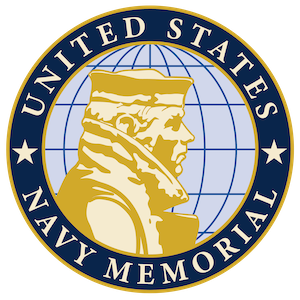Commemorating the 69th Anniversary of the Commissioning of the USS Saratoga CV-60, we are honored to recognize the service of the USS Saratoga Association President, Captain Mark D. Kikta, USN Retired.
April 2025 Story of the Month Video Introduction
The United States Navy Memorial Stories of Service Program is honored to announce the April 2025 story of the month has been selected to recognize the service of United States Navy Veteran, Captain Mark B. Kikta. The United States Navy Memorial Stories of Service Program was privileged to interview Captain Kikta at the USS Saratoga Association Reunion in the Fall of 2023.
Mark Kikta’s path to becoming a Captain in the United States Navy was a unique journey which was guided by family influence, youthful aspirations, and willingness to charge into the unknown when presented with opportunities. His story, rich with the thrill of flight, the weight of command, and the camaraderie forged in service, offers a compelling glimpse into the life of a Naval aviator.
Captain Kikta’s initial interest towards the Navy stemmed from his father’s civilian work within the Department of the Navy in Washington D.C. His father encouraged him to consider the Naval ROTC program after high school. Captain Kikta’s determination led him to the Navy ROTC, where he enrolled at the University of South Carolina in 1968.
His early days as a midshipman ignited a passion that would define his future. Summer training deployments offered glimpses into different pathways of naval service and careers. While a visit with the Marines in Little Creek was memorable, an experience at Corpus Christi solidified his yearning for the skies. Piloting an S2 and a T-34 sparked an undeniable love for flying, steering him away from his initial interest in marine biology. A senior year training cruise aboard the USS John F. Kennedy, culminating in a thrilling ride in an F-4 Phantom, further solidified his aviation aspirations.
Pensacola and then Beeville, Texas, became his classrooms in the sky, where he chose jets and honed his skills, eventually mastering carrier landings on the USS Lexington.
His first solo trap landing on the Lexington is a tale etched in nervous excitement, with the recent viewing of "Jaws." The imagined sharks lurking beneath the waves added a unique layer of pressure to an already daunting task. With his first landing in the books, advanced training in the A-4 Skyhawk paved the way for operational flying.
His first fleet squadron, VS-32, stationed on USS John F. Kennedy, immersed him in the realities of Cold War deployments to the Mediterranean. These weren't just exercises; they involved interaction with Soviet vessels and aircraft, a tense dance of surveillance and counter-surveillance. Captain Kikta memories of attempts by Soviet submarines to retrieve sonar buoys dropped by his S-3 Viking, with at times, Russian chatter audible over their monitoring equipment. He even recalls a night mission tracking a Soviet submarine that was abruptly lost after a crew member inadvertently dropped a flare buoy, illuminating their position.
After a tour instructing new aviators on the S-3, Captain Kikta returned to VS-22 as a department head, eventually serving as both Maintenance Officer and Operations Officer, once again on the familiar deck of the Kennedy. He was promoted as the Assistant Air Operations Officer and then the Air Operations Officer. From there, he became Executive Officer and then the Commanding Officer of VS-32 which reported aboard the USS America. Leading his squadron in battle during the Gulf War showcased Captain Kikta’s natural ability to motivate and inspire those around him to rise to every occasion and exceed mission goals.
A subsequent shore duty assignment in Washington D.C. proved less fulfilling, making his return to sea which led to the role as Air Boss aboard the USS Saratoga, an experience which would win him great admiration and support from his sailors and fellow officers. As Air Boss, Captain Kikta oversaw the intense ballet of flight operations, leading a dedicated team of 680 sailors responsible for catapults and arresting gear. Despite the demanding hours and lack of sleep, he describes this as his favorite command, a testament to the professionalism and dedication of his crew.
He fondly remembers the Saratoga itself, an older ship with a vibrant history and heritage. Every Navy pilot earns a call sign, Captain Kikta’s first was “Grumpy," a moniker from his junior officer days. This evolved into the more formidable "Spine Ripper" during a Mediterranean deployment, a humorous anecdote involving an auction that stuck with him throughout his career.
Reflecting on his journey, Captain Kikta hopes the USS Saratoga will be remembered as a "true fighting ship," a vessel that played a vital role in global security from Vietnam to Desert Storm. He emphasizes, the Saratoga’s true legacy lies in its people, the extraordinary sailors whose commitment formed the heart of the vessel and whose expertise was a profound asset to our nation. He firmly believes their professionalism deserves lasting recognition.
Captain Kikta’s story is more than just a recounting of naval service; it’s a testament to the power of early influences, the allure of flight, the responsibilities of leadership, and the enduring bonds found in the brotherhood of service. From a young man unsure of his path to a seasoned Captain who witnessed history unfold from the flight deck, Captain Kikta’s journey embodies the dedication and spirit of those who serve their nation at sea.
Service Memories of Captain Mark D. Kikta
The United States Navy Memorial honors United States Navy Veteran, Captain Mark D. Kikta, featured within this series titled, Tales from the Navy Log, Story of the Month. Each month, this series honors a Veteran’s story recorded by the Stories of Service Program at the Navy Memorial. To learn more about this story and to explore the Navy Memorial archive, visit the Navy Memorial Stories of Service site at https://www.navymemorial.org/stories-of-service



